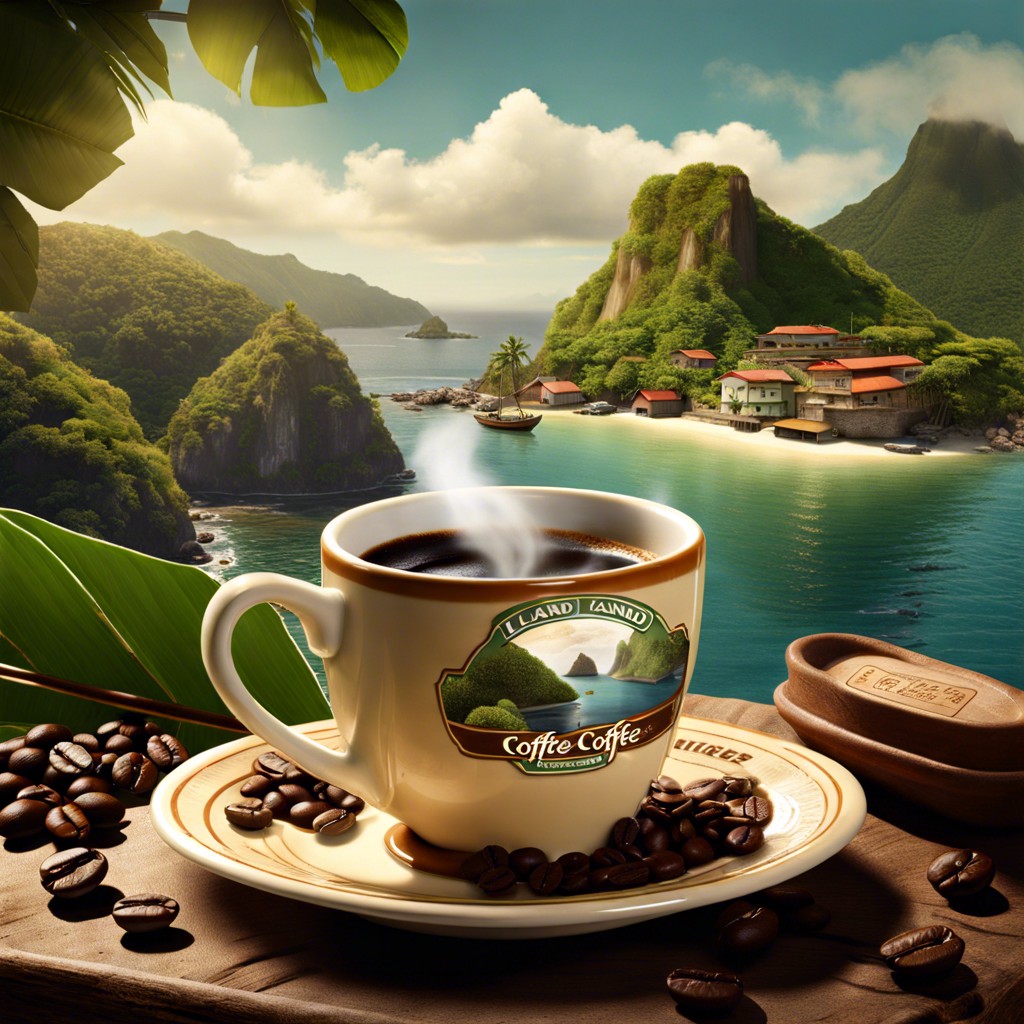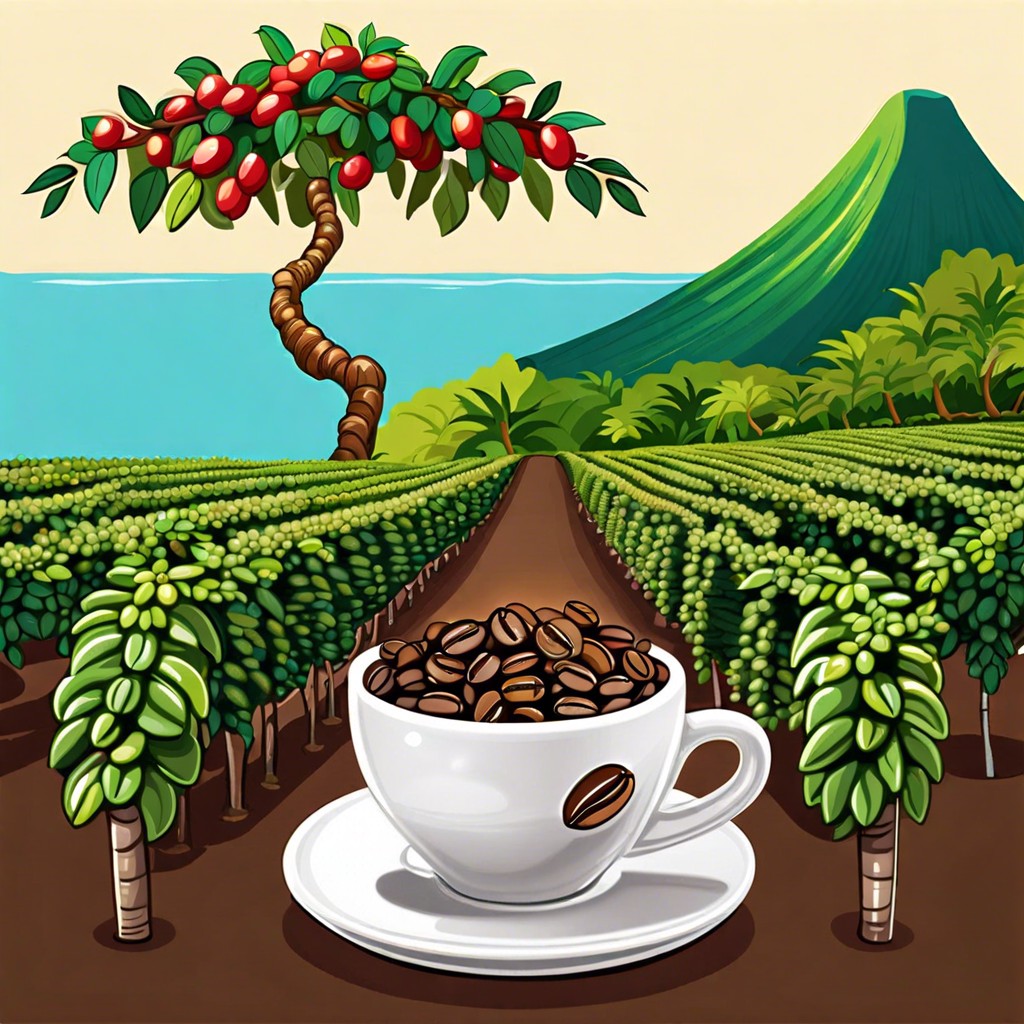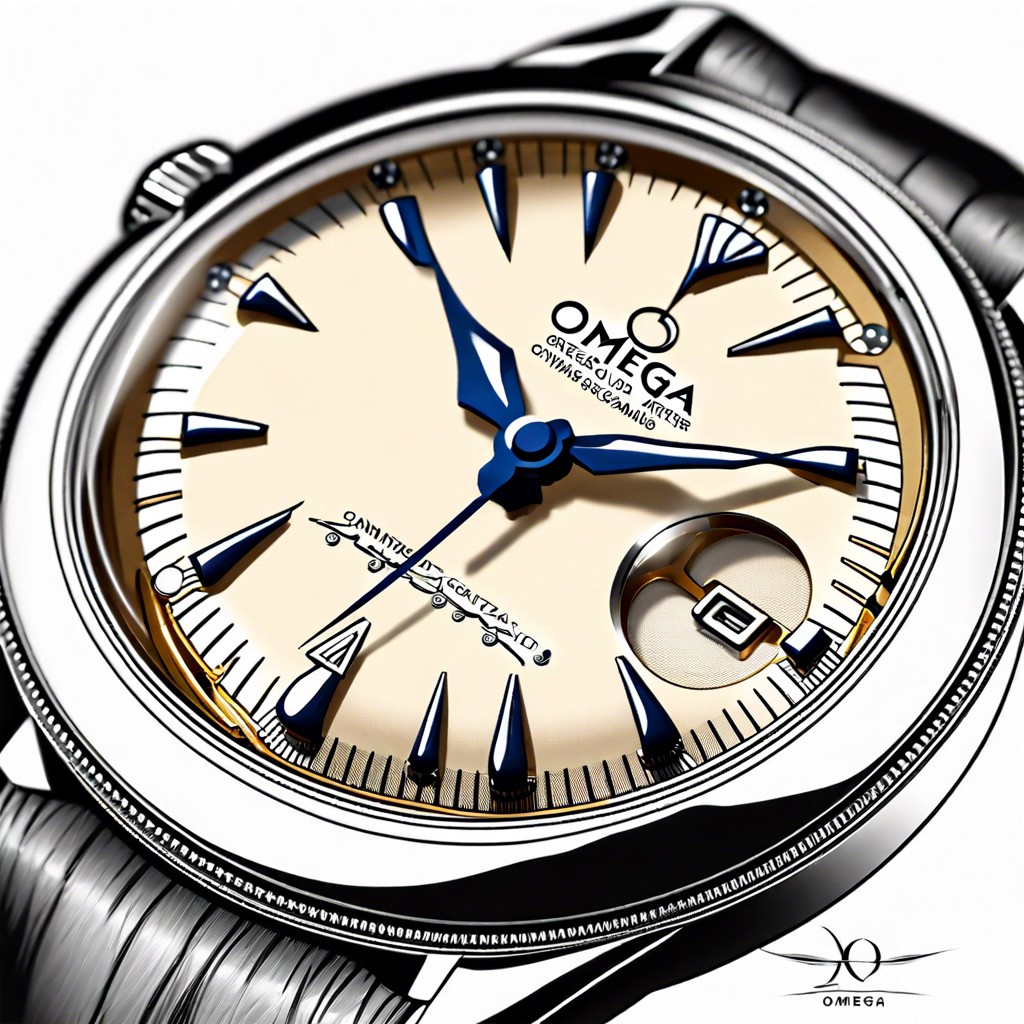Last updated on
Discover the charm of island vintage coffee as this guide reveals the best places to experience authentic island coffee culture and history.
Key takeaways:
- Island vintage coffee has a rich historical significance.
- Islands produce unique coffee varietals with distinct flavors.
- Sustainable farming practices are crucial in island coffee production.
- Island climates significantly impact coffee bean quality.
- Coffee plays a key role in the economies and exports of island nations.
Historical Significance of Island Vintage Coffee

Island regions have a storied history in the realm of coffee production, with the industry often dating back to the colonial era. The volcanic soil and ideal climatic conditions found on many islands create a unique terroir that contributes to the distinct flavors of the coffee. Coffee beans produced on islands such as Jamaica, Puerto Rico, and Hawaii are often regarded as some of the highest quality in the world.
The renowned Jamaican Blue Mountain Coffee, for instance, has been cultivated since the 18th century, and its reputation for smoothness and mild flavor continues to hold prestige in the coffee market. Similarly, Kona coffee from Hawaii is celebrated for its rich aroma and lack of bitterness, with its legacy anchored in the meticulous care and tradition dating back to the early 19th century.
The rarity of these vintage beans and the limited production due to the geography of islands add to their allure and historical significance. Collectors and connoisseurs often seek out these coffees for their ties to the heritage of the islands and the narrative of their cultivation. The traditional methods of farming and processing, largely unchanged over generations, underscore the cultural importance of coffee in these regions and embody a living history.
As a result, island vintage coffees not only offer a taste profile sought after for its excellence but also embody the rich history and culture that has been brewed alongside each bean. The legacy of coffee production on these islands contributes to their identity and continues to influence the global perception of fine coffee.
Unique Coffee Varietals Grown On Islands

Islands create microclimates that foster the cultivation of distinct coffee varietals, each with unique flavor profiles. Take Kona coffee from Hawaii, revered for its rich yet smooth character, derived from the volcanic soil and ideal weather conditions. Similarly, Jamaica Blue Mountain coffee, grown at high elevations in a region protected from harsh weather, is known for its mild flavor and lack of bitterness.
Another gem is Puerto Rico’s Arabica beans, which benefit from the tropical conditions to produce coffee that is sweet and fruity with a full body. On the other side of the world, the Galápagos Islands offer a rare varietal that is low in acidity due to the island’s rich and fertile soil, enriched by volcanic ash. Each island’s topography, climate, and soil composition promote the growth of these unique varietals, resulting in a specialty coffee market that is diverse and rich in flavors.
Sustainable Farming Practices in Island Coffee Production

Sustainable farming practices are pivotal in maintaining the delicate ecosystems of island environments. These methods often hinge on holistic approaches, tailored to enhance the coffee crop’s natural resistance to pests and diseases while fostering a balance with local flora and fauna.
Island coffee producers frequently adopt shade-grown methods, cultivating coffee under a canopy of indigenous trees. This technique conserves habitat for wildlife, prevents soil erosion, and promotes a rich diversity of plant species.
Organic farming is prevalent, with a focus on using natural compost and avoiding synthetic fertilizers and pesticides. This not only preserves the local water quality but also ensures the health of the soil and the longevity of the coffee farms.
Water conservation strategies are also key due to the limited freshwater resources on many islands. Techniques such as rainwater harvesting and drip irrigation ensure that water is used efficiently, minimizing waste and stress on the local water supply.
Agroforestry practices intertwine with coffee production, where diverse crops coexist with coffee plants. This mixed-cropping system boosts soil fertility and provides additional income sources for farmers, fostering economic sustainability.
Furthermore, many island coffee growers participate in fair trade programs. These initiatives help ensure equitable trade relationships, fair wages for farmers and workers, and investment in community development.
Investment in education for local farmers about sustainable practices is also critical. Through workshops and cooperative extensions, growers learn new techniques to improve yield and quality while preserving their environment for future generations.
Collectively, these sustainable practices not only yield high-quality beans that are environmentally friendly but also contribute to the social and economic well-being of island coffee-producing communities.
Impact of Island Climate On Coffee Bean Quality

Island climates offer unique conditions that affect coffee bean quality significantly. Consistent temperatures, high altitude, and volcanic soil contribute to the development of coffee with distinct flavors.
The stability of island temperatures helps in even maturation of coffee cherries, leading to a uniform taste profile. High altitudes, common in islands with mountain ranges, slow down the growth of coffee plants, giving beans more time to absorb nutrients and develop complex flavors.
Volcanic soil found on many islands is rich in minerals and retains moisture well. This fertility supports healthy coffee plants and can impart a subtle mineral quality to the coffee, often desired by connoisseurs.
The surrounding sea can also influence the coffee quality. Coastal breezes can mitigate the heat, which could otherwise stress plants and contribute to over-ripening. High humidity levels typical for islands are beneficial during the drying process, potentially reducing the risk of bean fermentation and mold.
In summary, the island climate’s interaction with coffee plants enriches the bean quality, creating a product with characteristics that are hard to replicate elsewhere.
Role of Coffee in Island Economies and Export

Coffee cultivation plays a pivotal role in the economies of many island nations. It often stands as a primary agricultural export, which makes it a significant contributor to these countries’ GDP. In regions such as Jamaica and Hawaii, coffee is not just a crop; it’s a heritage and a major source of income for local farmers.
Island countries with limited landmass rely on high-value crops to sustain their economies. Premium coffee beans, such as Jamaica Blue Mountain and Hawaiian Kona, fetch a higher market price due to their quality, unique flavors, and limited supply. These high prices can help balance trade deficits.
Furthermore, coffee production can lead to job creation in rural areas. From farming and harvesting to processing and packaging, the industry offers employment opportunities across its value chain. It also stimulates tourism through farm tours and coffee tasting experiences.
Lastly, the export of coffee beans can help diversify an island economy. With a reliance on tourism, many island nations are vulnerable to global economic shifts. A strong coffee export market can mitigate these risks by providing an additional stable income stream.




